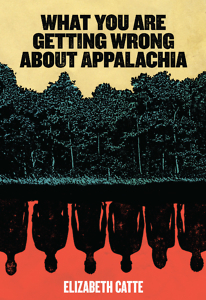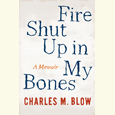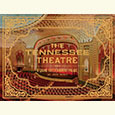Wrong About Appalachia
Elizabeth Catte deconstructs J.D. Vance’s view of a misunderstood region
In What You Are Getting Wrong About Appalachia, Elizabeth Catte upends a metropolitan narrative advanced by authors such as J.D. Vance, who paint the vast Appalachian region, stretching from northern Georgia and Alabama to New York, as an entrenched bastion of white rage and dysfunction, the epicenter of Trump Country.
 Catte, a Ph.D. graduate of Middle Tennessee State University in Murfreesboro and a Knoxville native, is a socialist historian in the vein of Howard Zinn. In What You Are Getting Wrong About Appalachia, she looks at the region’s history through the lens of human labor and natural resources that have been exploited by capitalist outsiders bent on extracting as much wealth as cheaply as possible, no matter the cost to the land and its people. In this look into the past and present of the great eastern mountain chain, Catte eviscerates Vance’s bestselling memoir, Hillbilly Elegy, and others like it-books that depict a “Greater Appalachia” inhabited by the hard-headed, self-destructive descendants of Scots-Irish immigrants who nurse a contempt for law and penchant for drinking, fighting, and general carrying on.
Catte, a Ph.D. graduate of Middle Tennessee State University in Murfreesboro and a Knoxville native, is a socialist historian in the vein of Howard Zinn. In What You Are Getting Wrong About Appalachia, she looks at the region’s history through the lens of human labor and natural resources that have been exploited by capitalist outsiders bent on extracting as much wealth as cheaply as possible, no matter the cost to the land and its people. In this look into the past and present of the great eastern mountain chain, Catte eviscerates Vance’s bestselling memoir, Hillbilly Elegy, and others like it-books that depict a “Greater Appalachia” inhabited by the hard-headed, self-destructive descendants of Scots-Irish immigrants who nurse a contempt for law and penchant for drinking, fighting, and general carrying on.
As she points out, the region shouldn’t be considered a monolithic culture and certainly not one made up entirely of white people of British heritage. African-American freed and fugitive slaves, followed by their descendants, have inhabited the Appalachian hills and valleys since the early nineteenth century. Over the generations, as Daniel Sharfstein points out in The Invisible Line, many of these African-American families began to present as white. The region also attracted Southern European laborers-first to clear-cut the virgin forests and then to mine coal, as novels such as Matthew Neill Null’s Honey from the Lion have illustrated.
 Photographs and magazine articles about Appalachia from the Depression into the 1960s helped mask the racism of both periods, Catte writes. “For white people uncomfortable with images of the civil rights struggles and the realities of Black life those images depicted, an endless stream of sensationalized white poverty offered them an escape-a window into a more recognizable world of suffering.” Such depictions focus “exclusively on the region’s deprivation. In the process of its creation it provided the raw material for a new moral position about the lot of the poor. The belief that poverty is a character flaw-a demonstration of moral weakness-hangs over every image of a barefoot child or unemployed miner.”
Photographs and magazine articles about Appalachia from the Depression into the 1960s helped mask the racism of both periods, Catte writes. “For white people uncomfortable with images of the civil rights struggles and the realities of Black life those images depicted, an endless stream of sensationalized white poverty offered them an escape-a window into a more recognizable world of suffering.” Such depictions focus “exclusively on the region’s deprivation. In the process of its creation it provided the raw material for a new moral position about the lot of the poor. The belief that poverty is a character flaw-a demonstration of moral weakness-hangs over every image of a barefoot child or unemployed miner.”
“People in regions like Appalachia, poor white people, have always received the projected angst of more comfortable and stable white Americans,” Catte said in an interview with The Outline. “There’s a long history of that in Appalachia … certain regions and certain people just absolving all of the country’s sin so people can continue to feel self-righteous and progressive.”

Lyda Phillips is a veteran journalist who grew up in Memphis and has earned degrees from Northwestern, Columbia, and Vanderbilt universities. The author of two young-adult novels, she worked for United Press International before returning to Nashville.


